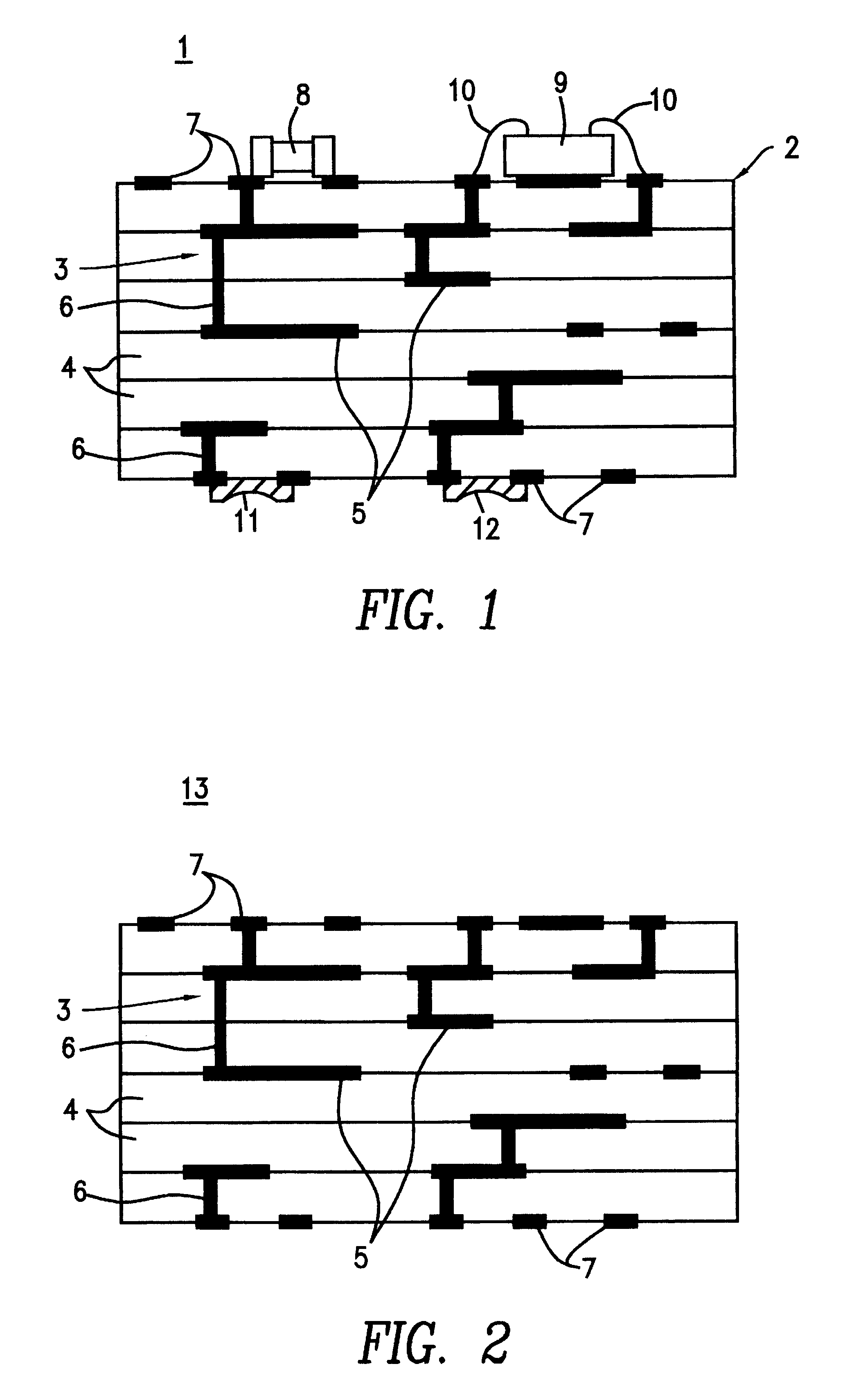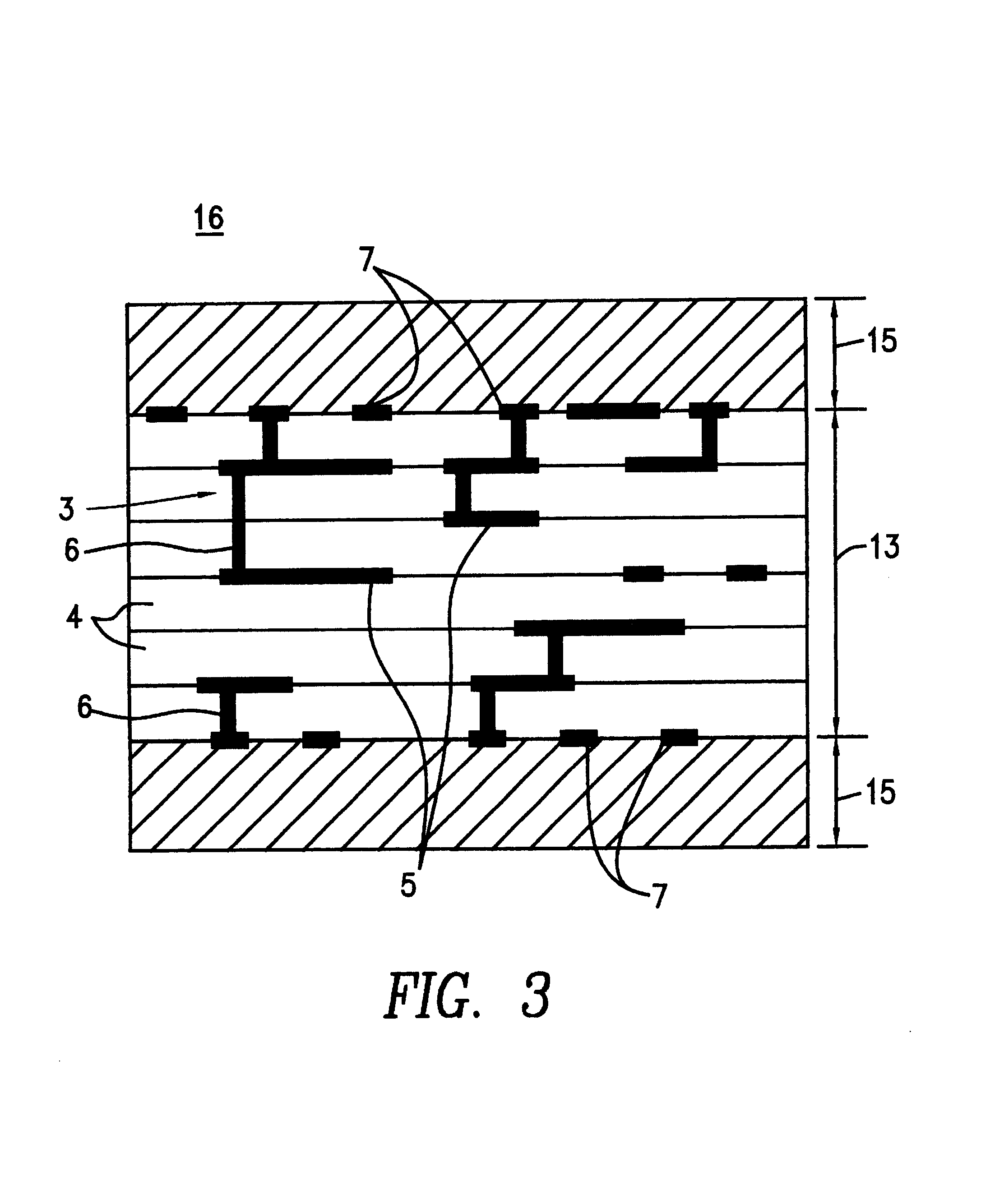Glass-ceramic composition for ceramic electronic part, ceramic electronic part, and method for manufacturing multilayer ceramic electronic part
- Summary
- Abstract
- Description
- Claims
- Application Information
AI Technical Summary
Benefits of technology
Problems solved by technology
Method used
Image
Examples
example 2
In this Example 2, not only the content of added cerium oxide powder but also the average particle size was changed as shown in Table 2. Sample multilayer ceramic substrates were prepared according to the same procedures as those for Example 1, and were subjected to observation of the color of the substrate bodies and the discoloration in the vicinities of electroconductive films as well as evaluation of the transverse rupture strength and the insulation reliability.
It is to be noted that the ratio of the "Content of added glass" to the "Content of added alumina" was 45:55 for each of the samples, in the same way as shown for Sample 4 in Table 1. In Table 2, the data for Sample 4 are listed again.
In reference to Table 2, when the average particle size of cerium oxide was in the range of 0.1 to 20 .mu.m as in the cases of Samples 4 and 13, neither gray discoloration of the substrate body nor discoloration in the vicinities of electroconductive films was observed, and good results wer...
example 3
In this Example 3, a bismuth oxide powder, a bismuth powder, an antimony oxide powder or an antimony powder was used instead of the cerium oxide powder that was used as an additive powder in Example 1.
First, a borosilicate glass powder was prepared by the same procedures as those of Example 1.
Next, the borosilicate glass powder and an alumina powder were blended together so that the former was 45% by weight and the latter was 55% by weight. Furthermore, a bismuth oxide powder, a bismuth powder, an antimony oxide powder or an antimony powder, each having an average particle size of 0.1 .mu.m, was added, respectively, at contents listed in Table 3, wherein the contents are represented as a percentage by weight based on the total weight of the glass powder and the alumina powder. The mixtures thus prepared were subjected to the same procedures as those for Example 1 to form glass-ceramic green sheets.
It is to be noted that the data for Sample 5 shown in Table 1 are listed in Table 3 ag...
example 4
In this Example 4, the average particle sizes of the bismuth oxide powder, bismuth powder, antimony oxide powder and antimony powder used for Example 3 were changed as shown in Table 4. Sample multilayer ceramic substrates were prepared by the same procedures as those for Example 3, and the multilayer ceramic substrates thus obtained were subjected to observation of the color of the substrate bodies and the discoloration in the vicinities of electroconductive films as well as evaluation of the transverse rupture strength and the insulation reliability.
It is to be noted that the data for Samples 16, 17, 18 and 19 that are shown in Table 3 are listed in Table 4 again. The glass powder and the alumina powder were blended at a ratio of 45:55 by weight in all of Samples 16 to 27 listed in Table 4, that is, including Samples 16 to 19. The additive powders were added at an amount of 0.0058 mol based on 100 g of the total of the glass powder and the ceramic powder, respectively.
In reference...
PUM
| Property | Measurement | Unit |
|---|---|---|
| Fraction | aaaaa | aaaaa |
| Fraction | aaaaa | aaaaa |
| Percent by mass | aaaaa | aaaaa |
Abstract
Description
Claims
Application Information
 Login to View More
Login to View More - R&D
- Intellectual Property
- Life Sciences
- Materials
- Tech Scout
- Unparalleled Data Quality
- Higher Quality Content
- 60% Fewer Hallucinations
Browse by: Latest US Patents, China's latest patents, Technical Efficacy Thesaurus, Application Domain, Technology Topic, Popular Technical Reports.
© 2025 PatSnap. All rights reserved.Legal|Privacy policy|Modern Slavery Act Transparency Statement|Sitemap|About US| Contact US: help@patsnap.com


